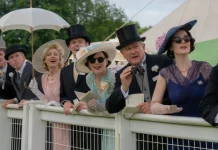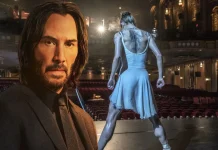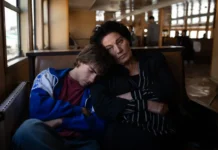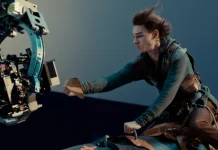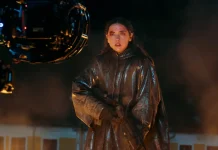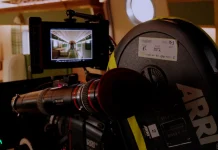Alfred Hitchcock’s Rear Window (1954) is a timeless classic that remains one of the most iconic films in cinematic history. With a star-studded cast including James Stewart, Grace Kelly, and Thelma Ritter, this thriller takes audiences on an unforgettable journey through voyeurism, deception, and murder. Set against the backdrop of New York City and shot entirely from the perspective of protagonist L.
B. “Jeff” Jefferies’ apartment window, Rear Window is a masterclass in suspenseful storytelling with exquisite attention to detail. Join me as we delve into the world of Hitchcock’s Rear Window and discover why it continues to captivate viewers over 65 years later!
The Plot
The plot of Rear Window revolves around a wheelchair-bound photographer named L.
B. Jeffries, played by James Stewart, who becomes obsessed with spying on his neighbors from the window of his apartment. As he watches them go about their daily lives, he begins to suspect that one of them may have committed murder.
The story is filled with tension and suspense as Jeffries enlists the help of his girlfriend Lisa (Grace Kelly) and nurse Stella (Thelma Ritter) to investigate what he believes has happened in the neighboring apartment.
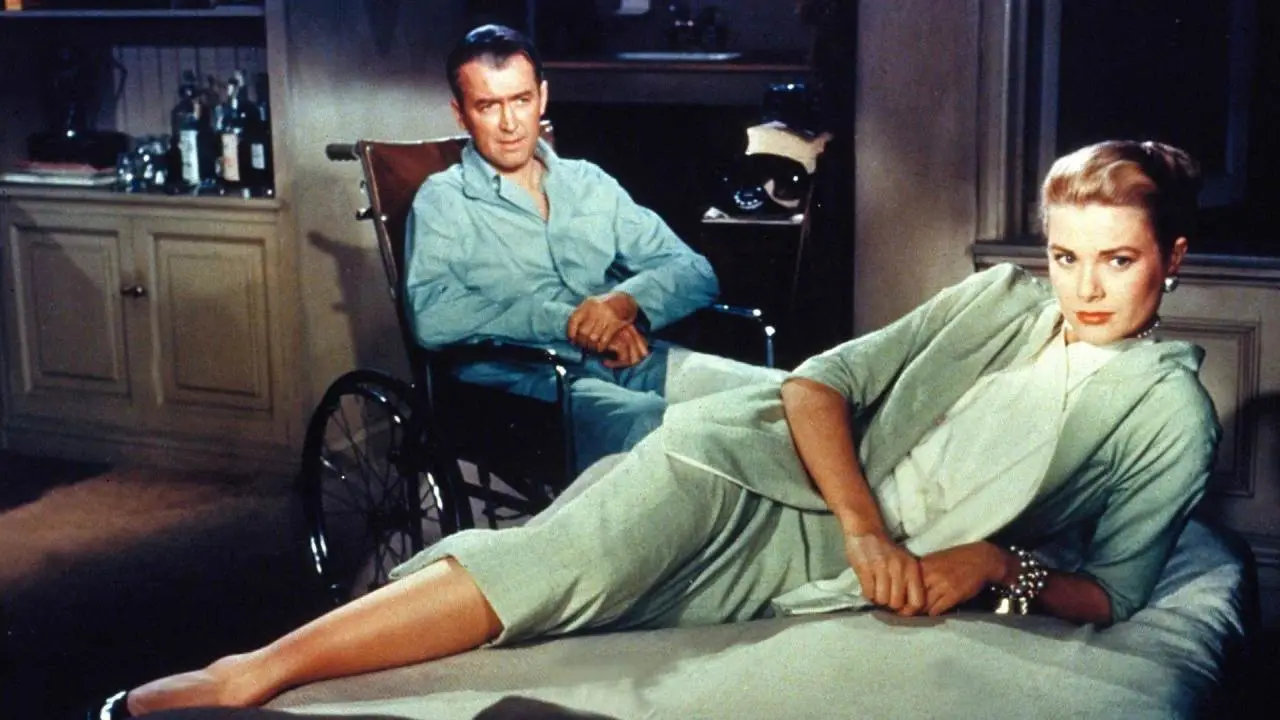
As they gather evidence and try to piece together the mystery, Hitchcock keeps viewers on edge with clever camera angles and misdirects that keep us guessing until the very end.
What makes Rear Window so compelling is not just its thrilling storyline but also how it explores themes such as voyeurism, morality, and human nature. It’s a movie that leaves you thinking long after it’s over.
The Cast
One of the reasons why “Rear Window” has stood the test of time is because of its exceptional cast. The film stars James Stewart as L.
B. Jeffries, a photographer who is confined to his apartment due to a broken leg. Grace Kelly plays Lisa Fremont, Jeffries’ girlfriend, while Thelma Ritter takes on the role of Stella, Jeffries’ nurse.
Stewart’s portrayal of Jeffries is brilliant and shows off his range as an actor. He captures the character’s frustration at being confined to his apartment but also manages to convey his curiosity and determination in solving what he believes to be a murder case.

Kelly shines as Lisa Fremont, bringing sophistication and elegance to her character. She also adds depth by showing Lisa’s vulnerability when she puts herself in danger while trying to help Jeffries solve the mystery.
Ritter delivers some of the film’s best lines with her no-nonsense attitude towards life and love. Her interactions with both Stewart and Kelly provide some much-needed comic relief throughout the film.
Alfred Hitchcock was known for getting top performances out of his actors, and “Rear Window” is no exception. The chemistry between Stewart, Kelly, and Ritter makes their characters feel real and relatable despite living in extraordinary circumstances.
Overall, “Rear Window” benefits greatly from its talented cast who bring their A-game performances that make this classic thriller so memorable even after all these years.
The Setting
The setting of “Rear Window” is one of the most captivating aspects of the film. The entire story takes place in a small, confined space: the apartment complex where James Stewart’s character, Jeff, resides.
Despite this limited area, Hitchcock manages to create a world that feels expansive and detailed through his use of camera angles and lighting. We see glimpses into the lives of Jeff’s neighbors through their open windows, each providing a unique perspective on human behavior.
Watch Rear Window Official Trailer #1 – James Stewart, Grace Kelly Movie (1954)
The set design is also noteworthy; every detail from the furniture to the wallpaper adds to the atmosphere and mood of each scene. In particular, Grace Kelly’s character Lisa’s stunning outfits stand out against her drab surroundings.
Hitchcock uses the setting as both a tool for storytelling and as an extension of his characters’ personalities. It serves as a reminder that even in a confined space like an apartment complex there are endless stories waiting to be told.
Hitchcock’s Direction
Alfred Hitchcock is known as the master of suspense, and Rear Window (1954) showcases his directing skills perfectly. Hitchcock expertly builds tension throughout the film by utilizing various camera techniques and shots.
One of the most impressive aspects of Hitchcock’s direction in Rear Window is how he uses only one set to create an entire world for the audience. The apartment complex where protagonist L.
B. Jefferies resides becomes a character itself, with each window revealing a different story or mystery.

Hitchcock also expertly uses close-ups to capture the emotions and reactions of characters, particularly James Stewart’s Jefferies. These close-ups allow viewers to feel like they are right there alongside him, experiencing everything that he sees and feels.
In addition, Hitchcock employs subtle details in each shot to add depth and intrigue to the story. From small clues hidden in plain sight to deliberate camera movements that suggest something sinister may be happening just out of view, every detail serves a purpose in building tension and moving the plot forward.
Alfred Hitchcock’s direction in Rear Window is nothing short of genius. His ability to use visual storytelling techniques without relying on dialogue or action creates a unique cinematic experience that keeps audiences on edge from beginning to end.
The Score
One of the most memorable aspects of “Rear Window” is its score, which was composed by Franz Waxman. The music perfectly captures the mood and tension of the film, adding an extra layer to Hitchcock’s already masterful direction.
Throughout the movie, Waxman uses a variety of instruments and sounds to create different atmospheres. In some scenes, we hear haunting strings that build up suspense and anxiety in the viewer. In others, we hear light piano melodies that convey a sense of romance or lightheartedness.

One particularly noteworthy aspect of the score is how it changes depending on what Jeff (James Stewart) is looking at through his rear window. When he sees something suspicious or frightening, the music becomes more intense and sinister. On the other hand, when he observes moments of everyday life in his neighbors’ apartments, such as Miss Lonelyhearts (Thelma Ritter) eating alone or Miss Torso (Georgine Darcy) dancing with her boyfriend, we hear more playful tunes.
Waxman’s score adds immeasurable value to “Rear Window,” making it not only one of Hitchcock’s greatest films but also one with an unforgettable musical accompaniment.
Themes and Motifs
One of the most interesting aspects of Rear Window is its exploration of themes and motifs. From voyeurism to gender roles, Hitchcock weaves together various ideas that add depth and complexity to the movie.
One prominent theme is the concept of looking versus seeing. Throughout the film, Jeff looks out his window at his neighbors, but it’s not until he sees something suspicious that he becomes truly engaged in their lives. This can be seen as a commentary on how we often observe without truly understanding or empathizing.

Another key motif is confinement, both physical and emotional. Jeff’s broken leg leaves him trapped in his apartment, while many of his neighbors seem trapped by their own circumstances or choices. The tension created by this sense of entrapment adds to the overall suspense and unease throughout the movie.
Additionally, Rear Window explores traditional gender roles through its portrayal of Lisa Fremont (played by Grace Kelly). While initially presented as a fashionable socialite who exists solely for Jeff’s entertainment, Lisa ultimately proves herself to be capable and independent – even putting her life on the line to solve a crime.
These are just a few examples of the rich themes and motifs present in Rear Window. Together with strong performances from James Stewart and Thelma Ritter, they make for an engaging viewing experience that still resonates today.
Conclusion
To wrap things up, “Rear Window” is a true masterpiece from Alfred Hitchcock. The film’s suspenseful plot, talented cast, and impressive setting all come together seamlessly to create an unforgettable cinematic experience. James Stewart and Grace Kelly deliver standout performances as the leads, with Thelma Ritter also leaving a lasting impression in her supporting role.
Hitchcock’s direction is masterful, using clever camera angles to keep viewers on edge while immersing them in the confined world of protagonist L.
B. Jefferies. The score by Franz Waxman sets the tone perfectly throughout the film.
Ultimately, “Rear Window” explores themes of voyeurism and morality that remain relevant today. It continues to be celebrated for its technical achievements and influence on filmmakers across generations.
If you haven’t seen this classic yet or it’s been a while since your last viewing – put it on your watch-list and prepare yourself for an unforgettable journey into one of Hitchcock’s greatest films!



